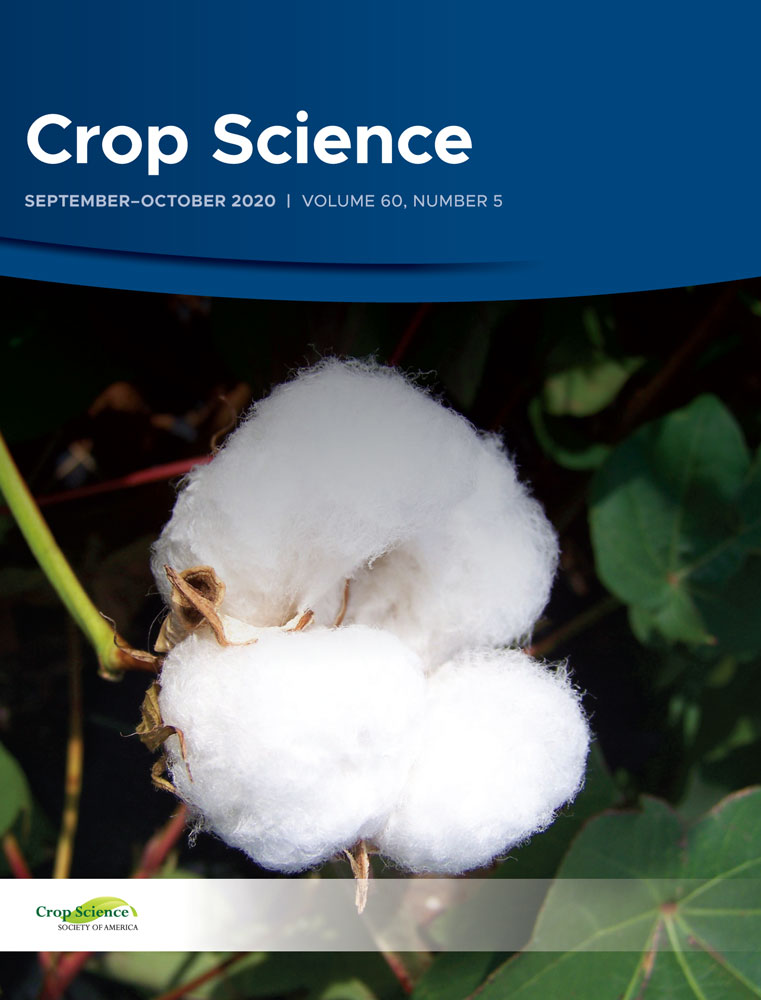View Item
- xmlui.general.dspace_homeCentros Regionales y EEAsCentro Regional Santa FeEEA OliverosArtículos científicosxmlui.ArtifactBrowser.ItemViewer.trail
- DSpace Home
- Centros Regionales y EEAs
- Centro Regional Santa Fe
- EEA Oliveros
- Artículos científicos
- View Item
Maize nitrogen management in soils with influencing water tables within optimum depth
Abstract
The central temperate Argentinean region is currently affected by rising water tables, allowing higher and more stable maize yields (Zea mays L) when they fluctuate within optimum depth. However, limited information was available for optimizing N management in these environments. Yield response to N rates was explored in soils with influencing groundwater (always less than 3.5 m depth), and different environment and management variables were examined to
[ver mas...]
The central temperate Argentinean region is currently affected by rising water tables, allowing higher and more stable maize yields (Zea mays L) when they fluctuate within optimum depth. However, limited information was available for optimizing N management in these environments. Yield response to N rates was explored in soils with influencing groundwater (always less than 3.5 m depth), and different environment and management variables were examined to help explain differential yield responses across sites. A total of 15 rainfed experiments (site × year combinations) were conducted with five N rates (0 to 240 kg N ha−1) tested at two different timings (sowing and V7) in a factorial design. A consistent yield response to N rate was evident, increasing yields from 2300 to 6900 kg ha−1 across sites. Yields at maximum N levels ranged from 13700 to 16900 kg ha−1. Fertilization timing had a minor and inconsistent effect on yield across sites. At a maize grain:fertilizer N price ratio of 10, the economically optimal N rate ranged from 117 and 206 kg N ha−1. Soil N‐NO3 at sowing, previous crop, and apparent‐INS (apparent‐indigenous N supply) helped explain differential yield responses across sites, and response models for obtaining economic optimum rates considering the influence of these variables are provided. These results highlight the relevance of N rate, rather than timing, as a critical crop management decision in environments with high water availability and yield.
[Cerrar]

Author
Ruiz, Alejo;
Salvagiotti, Fernando;
Gambin, Brenda L.;
Borrás, Lucas;
Fuente
Crop Science (First published: 16 October 2020)
Date
2020-10
Editorial
Wiley
ISSN
0011-183X
1435-0653
1435-0653
Formato
pdf
Tipo de documento
artículo
Palabras Claves
Derechos de acceso
Abierto
 Excepto donde se diga explicitamente, este item se publica bajo la siguiente descripción: Creative Commons Attribution-NonCommercial-ShareAlike 2.5 Unported (CC BY-NC-SA 2.5)
Excepto donde se diga explicitamente, este item se publica bajo la siguiente descripción: Creative Commons Attribution-NonCommercial-ShareAlike 2.5 Unported (CC BY-NC-SA 2.5)

